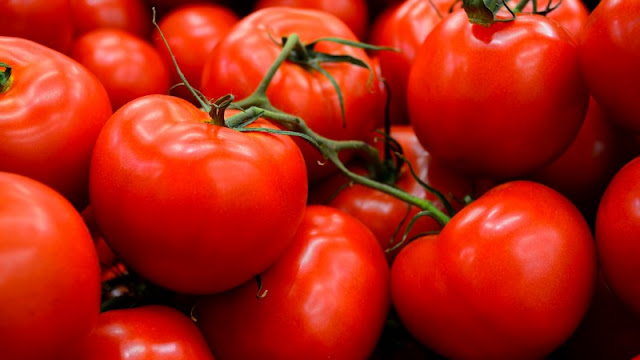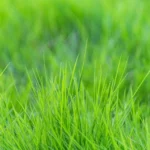
Scientifically speaking, a tomato is definitely a fruit. True fruits are developed from the ovary in the base of the flower, and contain the seeds of the plant (though cultivated forms may be seedless).
Around 150 million of tons of tomatoes are produced annually. Greatest producer of tomato in the world is China.
In 1887, U.S. tariff laws imposed a duty on vegetables, but not on fruits. This meant the status of tomatoes become a matter of legal importance. The U.S. Supreme Court ruled in the case of Nix v. Hedden that tomatoes were to be considered vegetables, based on the popular definition that classifies vegetables by use, where they are usually served with dinner and not as a dessert. However, the courts did not reclassify the tomato botanically, it is still a fruit.
The scientific name for tomato is Lycopersicon lycopersicum meaning wolf peach.
Tomatoes originally came from Peru, where their Aztec name translated to plump thing with a navel.
There are around 10,000 varieties of tomatoes worldwide.
Tomato is rich in acids that can remove smell released by skunk. These acids can also be a part of various lotions and hygienic products that are used for cleansing of the body and various objects in the house.
Tomatoes can be yellow, pink, purple, black and even white.
Leaves of tomato are usually 4 to 10 inches long and divided in 5 to 9 leaflets.
In cooler climates tomatoes are usually grown in glasshouses (greenhouses).
The tomato is eaten in many different ways, raw like a fruit, as an ingredient in many dishes, sauces, salsas, salads, processed into ketchup or tomato soup. Tomato juice is made as a drink and used in cocktails like a Bloody Mary.
Tomatoes are rich in lycopene, an antioxidant that is good for the heart and effective against certain cancers. Cooked tomatoes are actually better for you than raw ones, as more beneficial chemicals are released.
Tomato contains lycopene (chemical that belongs to the group of carotenoids) that can prevent development of certain types of cancer. Other than that, tomato has beneficial effect on the heart, blood pressure, cholesterol level and eye sight.
Tomatoes are also an excellent source vitamin C, biotin, molybdenum, and vitamin K. They are also a very good source of copper, potassium, manganese, dietary fiber, vitamin A (in the form of beta-carotene), vitamin B6, folate, niacin, vitamin E, and phosphorus.
The plants typically grow to 1–3 meters (3–10 ft) in height and have a weak stem that often sprawls over the ground and vines over other plants. It is a perennial in its native habitat, although often grown outdoors in temperate climates as an annual. An average common tomato weighs approximately 100 grams (4 oz).
Tomato grows like a vine. Stem is covered with fine hair which facilitates bonding to the ground or substrate.
Tomato is harvested unripe to prevent rotting and to ensure longer shelf-life. During the early ’90, scientists created genetically modified tomato that can remain fresh extended period of time.
Tallest tomato plant according to Guinness World Record grown by Nutriculture Ltd, Mawdesley, Lancashire, UK, reached a height of 19.8 m (65 ft) on 11 May 2000.
The Guinness World Record for most tomatoes harvested from a single plant over one year weighed 522.464 kg (1151.84 lbs) with 32,194 tomatoes harvested between May 2005 and April 2006. The tomato plant was at the Epcot Science project at Walt Disney World Company, Florida, USA.
Most popular tomato species are red. Cultivated tomatoes can also be yellow, orange, pink, green, black or white in color.
The heaviest tomato according to Guinness World Record weighed 3.51 kg (7 lb 12 oz) and was grown by G. Graham in 1986, Oklahoma, USA.
Tomatoes in the wild are pollinated by insects such as halictid bee. Cultured varieties of tomatoes can be self-pollinated. Some of them are pollinated by the help of artificial wind and by cultured bumblebees.
Heaviest ever recorded tomato had 7 pounds and 12 ounces in weight. Longest ever recorded tomato had 65 feet in length.
La Tomatina tomato fight in Buñol near Valencia happens every year on the last Wednesday in August though the partying starts earlier in the week. The highlight of the festival is the tomato fight which takes place between 11am and 1pm on that day. About 110,000 kg (242,500 pounds) of tomatoes are pelted at everything that moves. The event has become one of the highlights on Spain’s summer festivals calendar with thousands of people flocking to this little Valencian town for this chaotic event.
Size of tomato depends on the species. Smallest tomatoes have 0.4 to 0.8 inches, large tomatoes have 4 inches, while majority of cultivated tomatoes have 2 to 2.4 inches in diameter.
Wild tomato is perennial plant (it lives more than two year). Cultivated tomato is annual plant (it lives one year).
Stem, leaves and green (unripe) fruit contain alkaloid called tomatine which can induce poisoning.
Tomatoes are the state vegetable of New Jersey. They are the official state fruit of Ohio and tomato juice is the official beverage of Ohio. However, Arkansas took both sides by stating the South Arkansas Vine Ripe Pink Tomato as the state fruit and state vegetable, due to its culinary and botanical classifications.
China is the number one producer of tomatoes around the world. The U.S. is second.
Tomatoes are very popular in Mediterranean cuisines such as Italian. They are important ingredient in pizza and pasta sauces.
The first tomatoes in Europe may originally have been yellow. They were first referred to in writing as ‘pomo d’oro’, meaning ‘golden apple’.
Although most people believe that tomato belongs to the group of vegetables, this plant actually belongs to the group of fruits. Fruit of tomato is called berry.
Ripe tomato is safe and highly recommended piece of fruit because it contains high level of mineral and vitamins. Tomato can be consumed raw, in the form of soups, juices or as ketchup.









